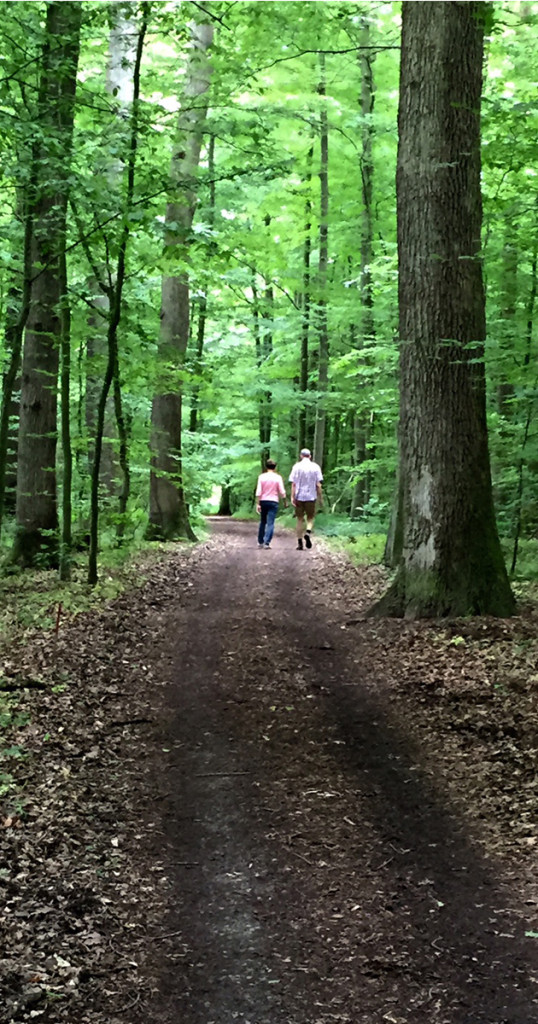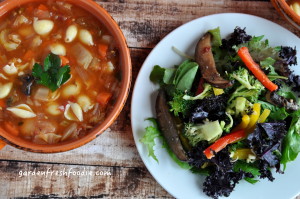This week I had a wonderful opportunity to meet with my dear friend and homeopathy mentor Dr. Heiner Frei. Many of you may know I first met Dr. Frei just over three years ago when he presented at a conference in Bad Kissingen, Germany. I love telling the story because, as we each have defining moments in our lives, this was truly one of mine.
I had actually decided to make the trip to Germany to attend the conference in order to hear another prominent European homeopath. After two days of taking in all of the various presentations, my brain was full and I was ready to jump on that train I had scheduled back to my in-laws that departed before the last presentation of the conference. I lingered a bit longer than I had planned in the conference hall, bidding farewell to some new acquaintances, when that last presenter, Dr. Frei, began his talk. Listening to the first 5 minutes was more than enough for me to realize that what he had to offer was exactly what I had made the long journey to learn next. So, the train left without me and instead I was exposed to a remarkable remedy selection methodology—Polarity Analysis (PA)—that truly transformed my practice.
What Dr. Frei gave me in my practice was a research-based, repeatable methodology that had not ever before been available in the field of homeopathy. His methodology was born out of his own background as an MD and frustrations studying the early masters, but still experiencing questionable success in his cases. Rather than giving up, he dug deeper and was intrigued by the work of Clemens Maria Franz Freiherr von Bönninghausen. Bonninghausen made huge contributions to the field of homeopathy during his lifetime, but what supports Dr. Frei’s work is the grading of symptoms and the theory of contraindications. You can read more about Dr. Frei’s methodology here on his website.

It turns out that I was not the only one impressed with the work Dr. Frei presented at the conference. In the past two years his methodology has gained recognition across Europe. This last academic year PA became the authorized curriculum to be taught to all German physicians studying homeopathy. This year he was invited to present both in India at Rajan Sankaran’s school, The Other Song, and at the National Center for Homeopathy Conference in Philadelphia in May. His two English language training books, Homeopathy and ADHD and Polarity Analysis will help spread the method even further.
We met this past week to discuss further methods to enlarge the reach of PA among homeopaths in America. I am very proud to share that one of the first steps will be to create a Polarity Analysis module within my Living Well™ training program for practitioners. I will be taking the research directly from Dr. Frei’s work and integrating it into a module planned for release in late August. I so look forward to this opportunity to share such a valuable tool with health practitioners with a background in homeopathy.
 As my time in Europe comes to a close for this summer I savor these last few days of slow starts each morning, daily walks in the surrounding forests, sharing meal preparation with my mother-in-law, our evening family bocce ball match on the back lawn and cool breezy nights with windows wide open. I am grateful for such a successful and rejuvenating journey. I do, however, look forward to soon diving back in to my practice as well as Austin’s treasure, Barton Springs, each evening!
As my time in Europe comes to a close for this summer I savor these last few days of slow starts each morning, daily walks in the surrounding forests, sharing meal preparation with my mother-in-law, our evening family bocce ball match on the back lawn and cool breezy nights with windows wide open. I am grateful for such a successful and rejuvenating journey. I do, however, look forward to soon diving back in to my practice as well as Austin’s treasure, Barton Springs, each evening!
Be sure to check back in next week when I share the latest findings on the lymphatic connection to the brain and how that relates to the work I do with my clients to clean their lymphatic system. Could the importance of lymphatic cleansing soon go mainstream?


 empty stomach, as fresh pressed juice, smoothie or in their whole form. Don’t move on until your are prepared to take on further change. Staying with a fruit only breakfast is a huge step forward for many and is a fabulous healthy start to each day.
empty stomach, as fresh pressed juice, smoothie or in their whole form. Don’t move on until your are prepared to take on further change. Staying with a fruit only breakfast is a huge step forward for many and is a fabulous healthy start to each day. med to an all-fruit breakfast change your lunch and dinner plate to meet the 80/50 guidelines of 80% plant based and 50% raw raw diet. Do this by adding a raw fruit or vegetable salad at the start of each meal, increasing the plant based dishes and decrease grains and protein servings.
med to an all-fruit breakfast change your lunch and dinner plate to meet the 80/50 guidelines of 80% plant based and 50% raw raw diet. Do this by adding a raw fruit or vegetable salad at the start of each meal, increasing the plant based dishes and decrease grains and protein servings. Over time: Introduce bit by bit more dishes that use food in its natural state—direct from the tree or plant and reduce your intake of foods that must be cooked or processed such as grains, meats and starchy vegetables.
Over time: Introduce bit by bit more dishes that use food in its natural state—direct from the tree or plant and reduce your intake of foods that must be cooked or processed such as grains, meats and starchy vegetables. 

 Now closing out my fourth trip to Romania I still marvel at the natural beauty of this country and the warmth and spirit of the people. What a week it has been and we depart with such a sense of fulfillment and ready to begin the next leg of our journey in Germany.
Now closing out my fourth trip to Romania I still marvel at the natural beauty of this country and the warmth and spirit of the people. What a week it has been and we depart with such a sense of fulfillment and ready to begin the next leg of our journey in Germany.

